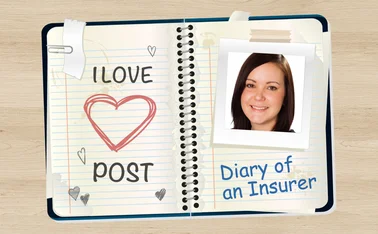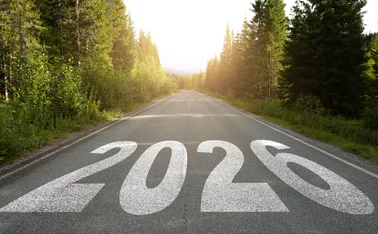
Blog: If Hurricane Andrew II hit Miami today

Need to know
- Hurricane Andrew led to widespread industry adoption of catastrophe models
- Before Andrew, insurers were using premiums to estimate how large hurricane losses could be
- Catastrophe models use actual property values and simulate potential future events
- In Miami, there’s a false sense of security that there won’t be much damage even from a category 5 hurricane because a lot of the exposure growth is newer high-rises along the coast
If a hurricane the strength of Andrew in 1992 tracked through Miami today, losses would likely exceed $200bn ($155bn), almost twice what the insurance industry is prepared for, warns Karen Clark, co-founder, president and CEO of Karen Clark & Company.
It was a beautiful sunny day in Boston on 24 August 1992, but I wasn’t able to enjoy it. Hurricane Andrew had just made landfall near Homestead, Florida, and I had to release the unpleasant news to our clients that the insured losses could exceed $13bn.
It took a few hours to muster the courage because I don’t think I fully believed the numbers coming out of our hurricane model, and I know the insurance industry didn’t. To quote one Lloyd’s underwriter, “a few mobile homes and an Air Force base, how much can it be?”. Another person at Lloyd’s, recalling the $4bn loss from Hurricane Hugo, commented: “It has to be less than Hugo because Hugo hit Charleston, but Andrew missed Miami.”
Given the extent of the disaster, it took many months for the claims to be settled and for it to finally become evident that the industry was going to pay out more than $15bn. So while the catastrophe models were in existence before Andrew, it was this event that clearly demonstrated the credibility of the modeling approach and which led to widespread industry adoption.
In the decades prior to Andrew, two things were happening. There was a lull in hurricane activity (a below average period) and people were moving to coastal areas, particularly Florida, in droves. Florida’s population doubled between 1970 and 1990.
During this time, however, insurers were not tracking the locations and values of the properties they were insuring. They were using premiums to estimate how large hurricane losses could be, and premium growth had not kept pace with exposure growth. The catastrophe models used actual property values to estimate the losses, and that’s why the numbers were more reliable.
The catastrophe models also introduced the concept of simulating potential future events using probabilistic techniques. This enabled insurers to understand how likely they were to experience losses of different sizes rather than focusing on one number. The models provide a full range of possibilities along with associated probabilities.
Today, the catastrophe models are well established as the global standard methodology for catastrophe risk assessment, and the industry is well prepared for a repeat of Hurricane Andrew. For an identical hurricane, insured losses would now be $50bn (£39bn) given the increase in the numbers and values of properties in the impacted area. While that’s over three times higher, the industry can cover this size loss.
But if Andrew occurs 20 miles north and tracks through the most populated areas of Miami, the insured losses would likely exceed $200bn. This is almost twice what the industry is prepared for and the reason is again exposure growth.
According to KCC estimates, there’s currently over half a trillion dollars of exposed property value in Miami-Dade County alone. In the tri-county region, the insured property value (including contents and time element exposures) is over $1.5trn.
Because a lot of the exposure growth is newer high-rises along the coast, there’s a false sense of security that there won’t be much damage even from a category 5 hurricane. While there is not likely to be structural damage, these buildings will not emerge completely unscathed.
The cost to repair even light damage to windows and facades on a high-rise is significantly greater than the cost of new construction. The catastrophe models estimate the financial loss paid by insurers and not the damage from an engineering perspective. A property may only have 5% damage but that could cost 20% of the replacement value to repair.
Hurricanes are like real estate: it’s all about location. A major storm has an equal chance of hitting anywhere along the southeastern Florida coast, and the industry was fortunate that Andrew made landfall where it did. Will we be as lucky with Andrew II?
Only users who have a paid subscription or are part of a corporate subscription are able to print or copy content.
To access these options, along with all other subscription benefits, please contact info@postonline.co.uk or view our subscription options here: https://subscriptions.postonline.co.uk/subscribe
You are currently unable to print this content. Please contact info@postonline.co.uk to find out more.
You are currently unable to copy this content. Please contact info@postonline.co.uk to find out more.
Copyright Infopro Digital Limited. All rights reserved.
As outlined in our terms and conditions, https://www.infopro-digital.com/terms-and-conditions/subscriptions/ (point 2.4), printing is limited to a single copy.
If you would like to purchase additional rights please email info@postonline.co.uk
Copyright Infopro Digital Limited. All rights reserved.
You may share this content using our article tools. As outlined in our terms and conditions, https://www.infopro-digital.com/terms-and-conditions/subscriptions/ (clause 2.4), an Authorised User may only make one copy of the materials for their own personal use. You must also comply with the restrictions in clause 2.5.
If you would like to purchase additional rights please email info@postonline.co.uk








